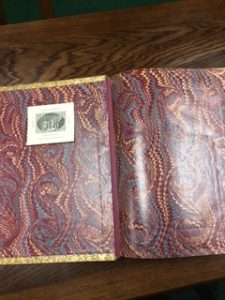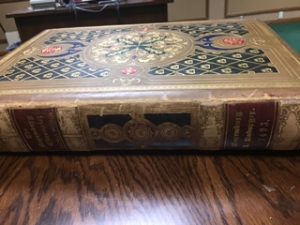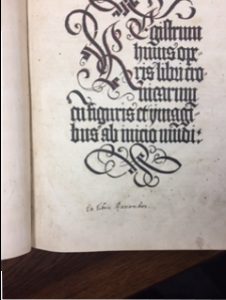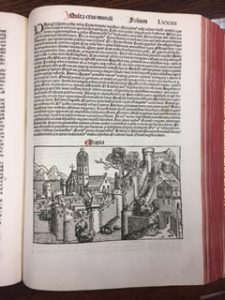Last Monday, Brittany Williams and I met with Midwestern State’s special collections librarian, who gave us access to all of Nolan Moore’s collection information. She opened a filing cabinet stuffed with manilla folders containing information for each item in the collection. She then handed us a binder with a list of the items. From this binder Brittany and I selected most of the 18th century books that were listed, but narrowed our list down to 20 books. Next, we searched each of the chosen book’s titles in MSU’s online catalogue which gave us each book’s call number. We turned back to the aforementioned cabinet and searched for the folder labeled with the desired call number. Inside the folder we generally found a couple thin strips of paper that described the book and the auction where Moore bough the item. From the auction site name and date we turned to a staggering book shelf stuffed with all of the auction pamphlets Moore had attended. Once we found the pamphlet with the corresponding date, we found a detailed description of the book and its condition at the time, as well as the price it was sold for.
The information we gathered will be used to create a map or timeline displaying where the book was published and then where Moore bought it. Our intention with this display is to showcase the distance each book had traveled since its production. Moore found significance in book history and our hope is to use part of his collection to demonstrate this. We want to create a small representation of the travel aspect of a book’s physical history.
As tedious as the process was, it was incredible getting to see the extent Moore went to build this collection. The shelves were packed tight with those pamphlets, each representing a day Moore spent in search of great works of literature. He kept such detailed records of the collection, making his personal connection to it even more evident. He truly loved and respected literature, human communication and books as a physical being.




